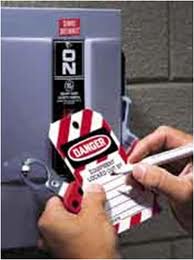
This Electricity Safety Facts page is intended to advise you of the potentially hazardous nature of electricity. The Electricity Forum is serious about your electrical safety. So, here are a few electrical safety facts to consider when you’re either watching television or working on live electrical equipment.
Electricity Safety Facts
What’s electricity’s traveling speed?
Let's just say that electricity moves at the speed of light—faster than 186,000 miles per each second. Static electricity—that little shock that you get when you touch your plugged-in television set—can add up to three thousand volts. If you think that’s a lot, then know that a lightning bolt can add up to three million volts, which lasts less than a second. The U.S. Energy Information Administration estimates that consumption of electricity will increase by up to 51 percent from the year 2002 to 2025.
Electricity Safety Facts – Death by Electrocution
Electrocution (death by electric shock) can happen at low voltages (600 volts or less). That’s right static electricity can kill you. According to the National Safety Council, 600 people die every year due to electrical incidents. Electrocution in itself is fourth cause of death in the workplace (behind violence, construction and traffic).
Electricity Safety Facts – Annual Stats of Electrical Accidents
A 10-year study conducted by the University of Chicago done on 120,000 workers determined that 125 injuries happen each year. Of these injuries, 77 per cent were electrical arc-related injuries while 21 per cent of these injuries resulted in permanent disabilities. In this study, 2.4 per cent of the accidents were fatal.
Electrical hazards in offices
Some of the leading causes of electrical accidents in offices, according to Electrical Safety International, include unsafe installations, faulty or defective equipment, and equipment misuse (especially involving surge protectors, power strips and extension cords).
Healthy Habits for Better Safety
Proper habits can keep you safe while you're performing your electrical work. Here are a few healthy electrical safety habits to get into.
Healthy Habits for Better Safety: